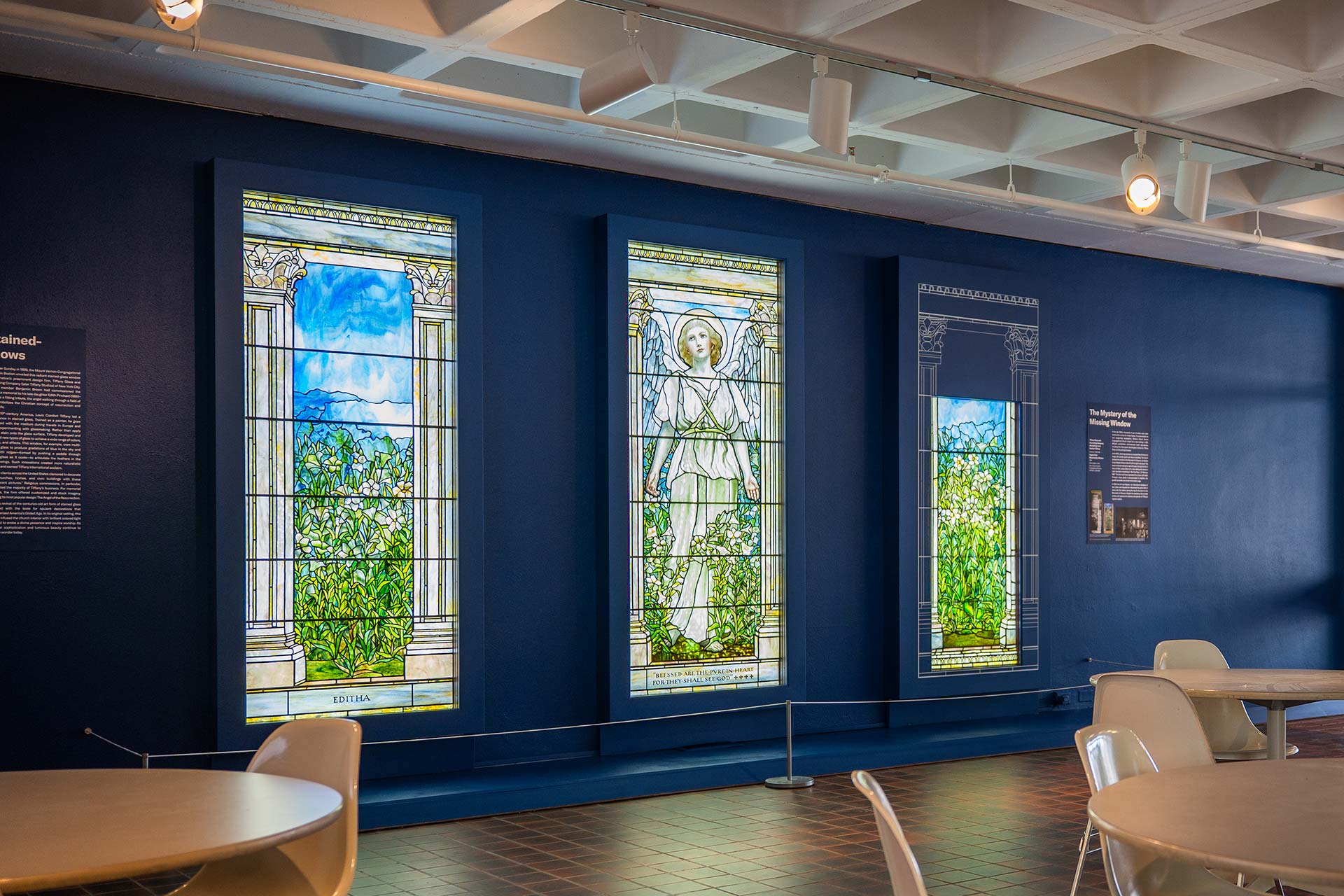
Come face-to-face with a set of three radiant stained-glass windows, reunited after more than 50 years and on view together in Worcester for the first time, and learn about their fascinating history.
In late 19th-century America, Louis Comfort Tiffany led a renaissance in stained glass. Trained as a painter, he grew fascinated with the medium during travels in Europe and began experimenting with glassmaking. With a large studio of master artisans, Tiffany developed and patented new types of glass to achieve a wide range of colors, textures, and effects that earned him international acclaim.
During America’s Gilded Age, wealthy clients clamored to decorate their homes, churches, and civic spaces with Tiffany’s “translucent pictures.” In 1899, the Mount Vernon Congregational Church in Boston unveiled this three-paneled window as a memorial to one of its parishioners. Decades later in 1975, the window was donated to the Worcester Art Museum after declining attendance prompted the church to merge with another parish and close its building. But before the window was shipped, thieves made off with the right-most panel. This panel remained missing for nearly 50 years until 2022, when the Art Loss Register—an international database of lost, stolen, and disputed art—discovered the panel when it came onto the market, paving the way for its return to the Worcester Art Museum and its reunification with the other two panels in this display.
Stay connected! Sign up for the Worcester Art Museum’s email newsletter.

